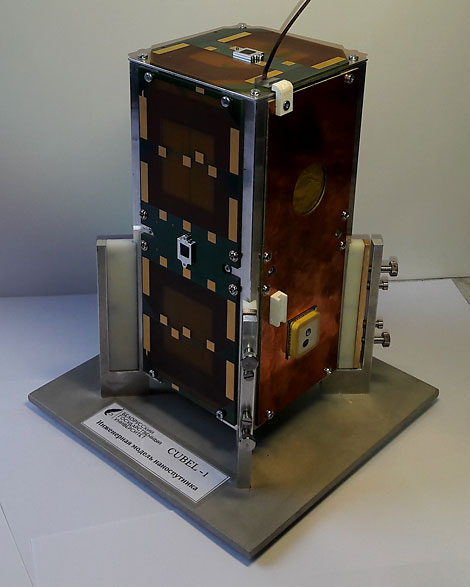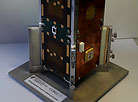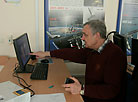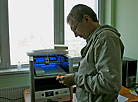The engineering model of the nanosatellite

The nanosatellite made by the Belarusian State University has all the components its big brother may have: orientation systems, power systems, active stabilization systems, a telecommunication system, and a camera. Yet the nanosatellite weighs only some 2kg and has extremely compact dimensions – 20x10x10cm. The core equipment is of Belarusian make and includes a navigator, a radiation spectrometer, an infrared sensor, and radiation-resistant elements. The Belarusian State University has established a satellite control center and a data reception station. The satellite will use amateur radio frequencies.
Such spacecraft are much cheaper than big-sized satellites. The latter may cost upwards of hundreds of thousands of U.S. dollars while the former may be created for dozens of thousands of U.S. dollars.
Apart from being cheap, nanosatellites boast a number of other advantages. They are fast to produce and can be inserted into orbit as part of a cluster of satellites. It is a cheap technical option that allows freely testing new technologies and staging experiments. Some people believe that the future of space exploration belongs to these extremely small specialized spacecraft. Such satellites are also very effective for education purposes. University students can dabble in creating and operating such spacecraft starting with the idea to create a nanosatellite and ending with the satellite’s launch, operation, data processing and usage. “Reading textbooks is one thing but developing a spacecraft of our own and operating it in real conditions is something else entirely,” said Vladimir Sayechnikov, head of the Physics and Aerospace Technologies Chair of the Radio Physics and Computer Technologies Department, scientific supervisor of the Aerospace Education Center at the Belarusian State University.
Nanosatellites do not need expensive components and extreme performance because they are not designed to last long. Experimentation is their core function. Unification is another advantage of nanosatellites. Some components can be 3D printed and specialists from the Belarusian State University actively exploit the technique.













